
In our last post, Survey Software Must-Haves: 6 Basic Question Types, we talked about the importance of questionnaire design and the basic question types you can do with your average market research survey software.
Today, we're going to tackle the advanced question types which are a little bit trickier; 'trickier' in the sense that while using these kinds of questions will give you richer data, they're a lot harder to do if you don't have the right survey software.
Advanced Question Types in Online Survey Tools
Advanced question types aka 'Professional Researchers Need This To Survive' give researchers the ability to investigate a concept or topic with all the tools available for on-screen surveys. This includes the ability to create interactive surveys or build various multimedia like videos and audio into the questionnaire, or even automate questions based on the respondent's previous answer.
Take a look at the following advanced question types:
1. Sliders
Sliders are an alternative question type for employing rating scales or scales with clearly defined numerical ranges. Respondents will be able to indicate their level of preference with a draggable bar like the one below.
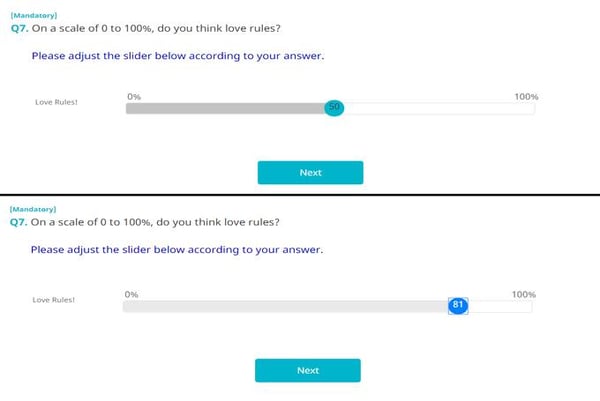
2. Text Highlight
Text highlight is an interactive way for respondents to rate the likability of the concept/text by highlighting the words or sentences. It's basically a select type question with at least one market and multiple highlightable test items.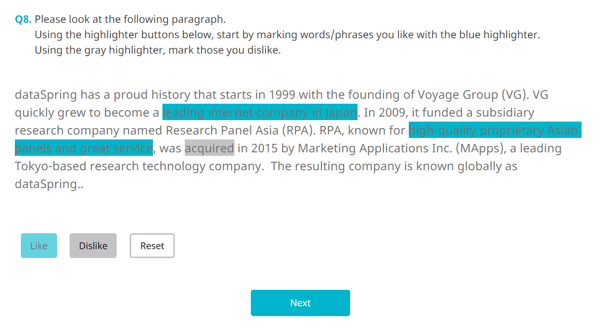
3. Heat Map
Heat maps are used to gather feedback on images. They help researchers get an instant feel for an area by grouping places into categories and displaying their density visually.
With this question type, respondents would have the ability to highlight areas they find interesting in an image, whether it's a static website, a wireframe image, complex print ad, or other visual materials.
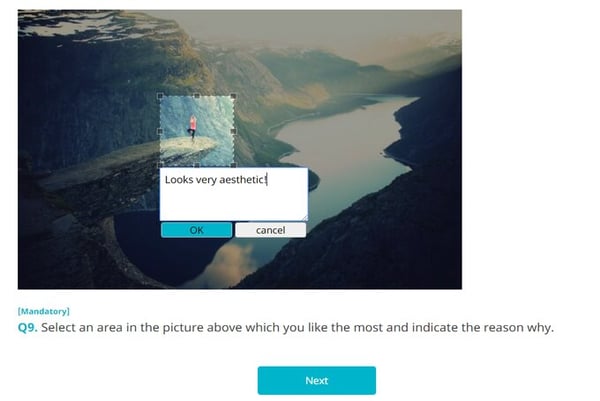
4. Shelf Test
To gauge which factors affect the desirability of a product when it's on the shelf, researchers would often do shelf tests. Among others, these are the types of marketing variables you can measure: shelf impact, shelf position, competitive position, price-demand curves, etc.
Your survey software would enable you to create a virtual environment that simulates the shopping experience. Respondents can take products off the shelf, zoom in and out, and add them to their shopping cart. From this data, researchers can isolate and measure variables, and tell which ones will have the most impact on potential consumers.
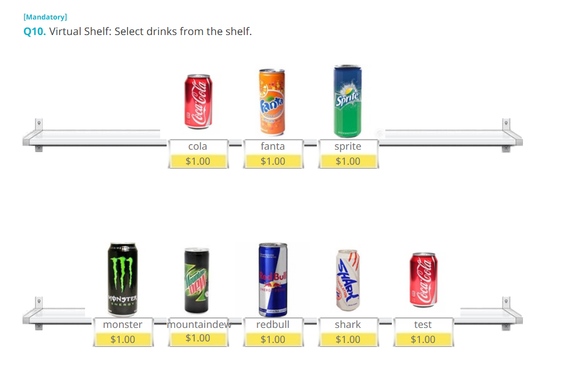
5. Conjoint
In a conjoint type, respondents are shown different product profiles with multiple combinations of product features and are asked which option they would choose. With this type of question, rather than directly asking respondents what attributes are most important to them, the researcher can statistically deduce which product features are most desired and which ones have the most impact on choice.
To create these kinds of questions, your survey software should allow you to design a questionnaire with a certain number of attributes, of levels under each attribute, and of product profiles with those attributes and levels per screen. The most widely used conjoint analysis system are CBC (Choice-Based Conjoint), ACBC (Adaptive Choice-Based Conjoint), and MBC (Menu-Based Choice).
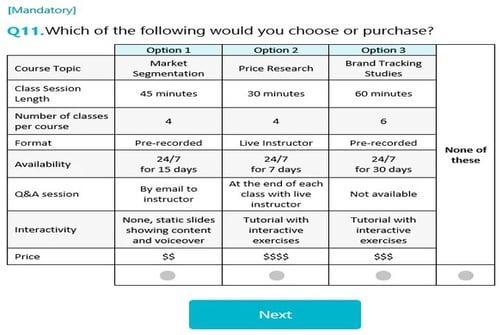
Last Words
I think we can all agree that these advanced question types look a lot more sophisticated than your basic run-of-the-mill questions. But, in my view, choosing how to ask a question must be based on the purpose of that question. That purpose must serve the end goal of the research project.
After all, questionnaire design is a craft. Learn it well, and you'll be able to use the proper question type with their proper function.
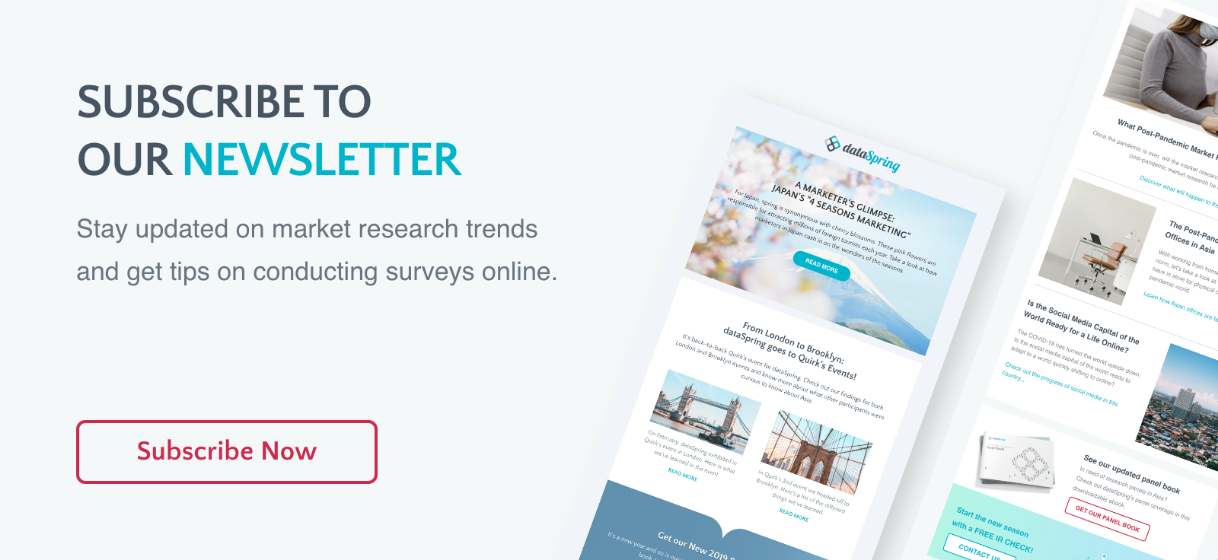

 Download Panel Book
Download Panel Book


